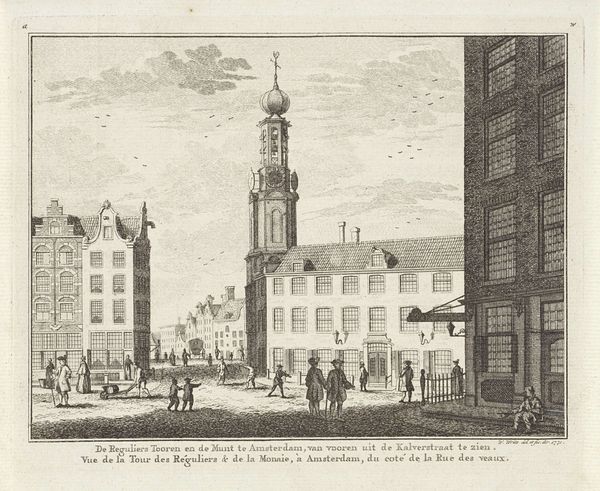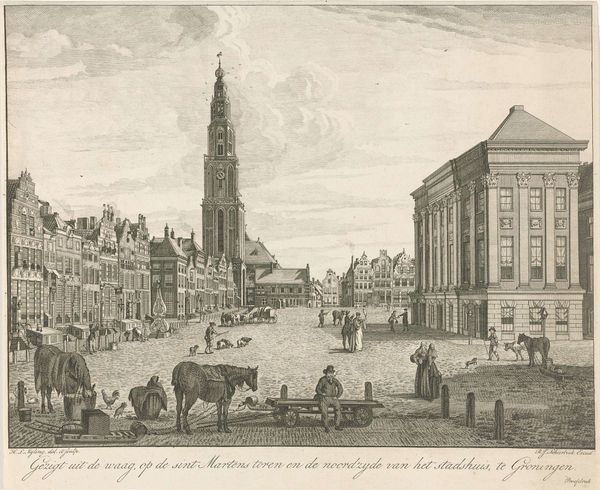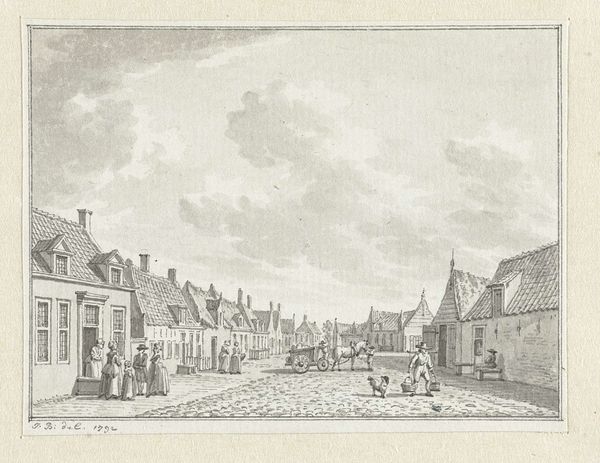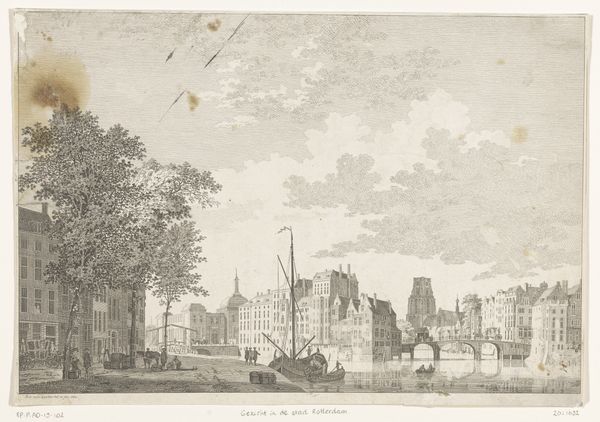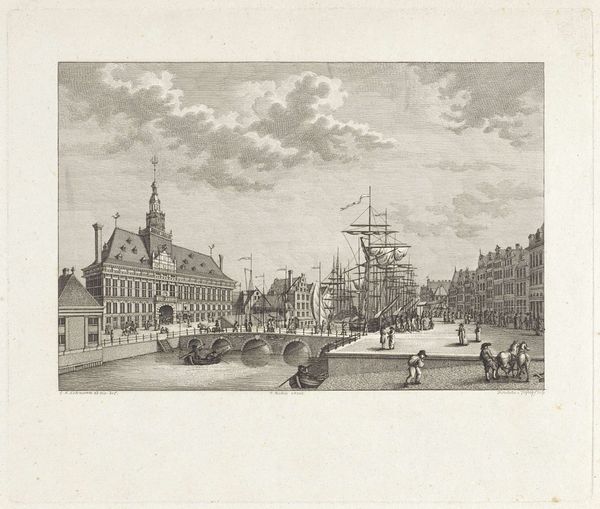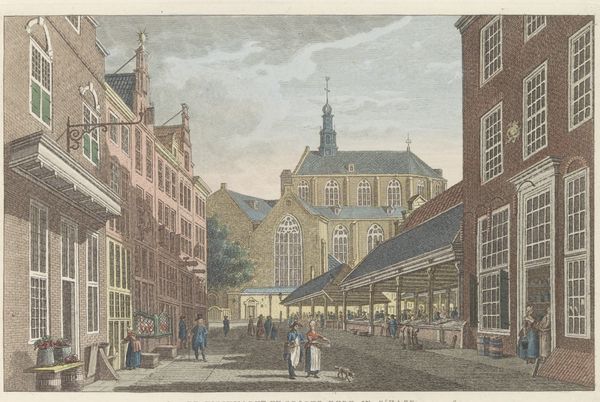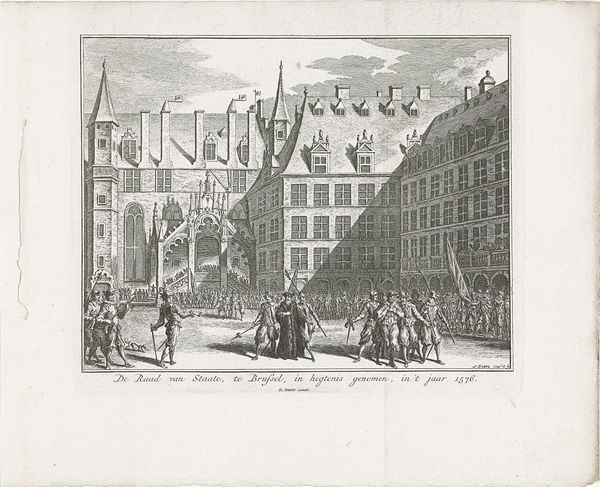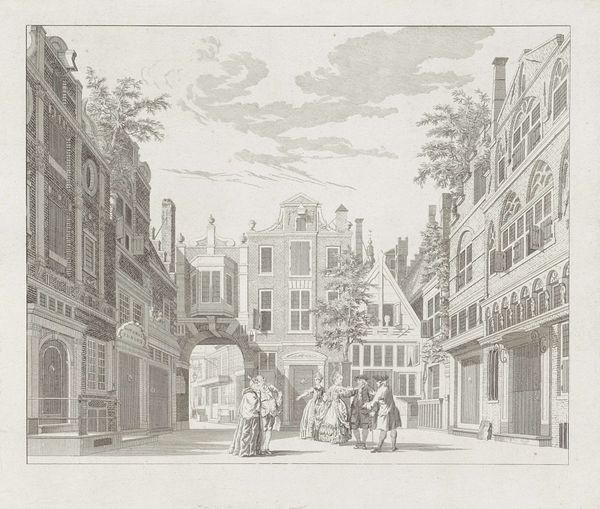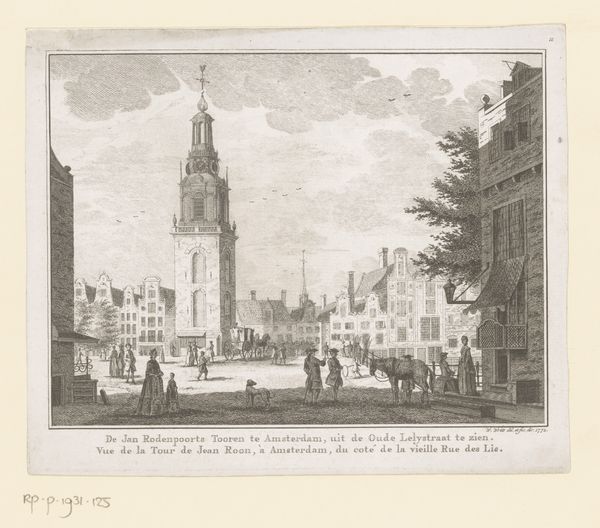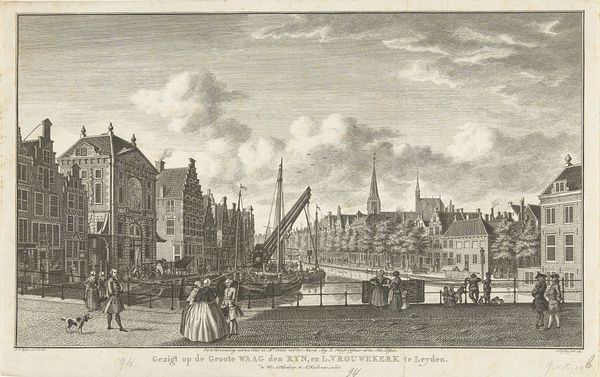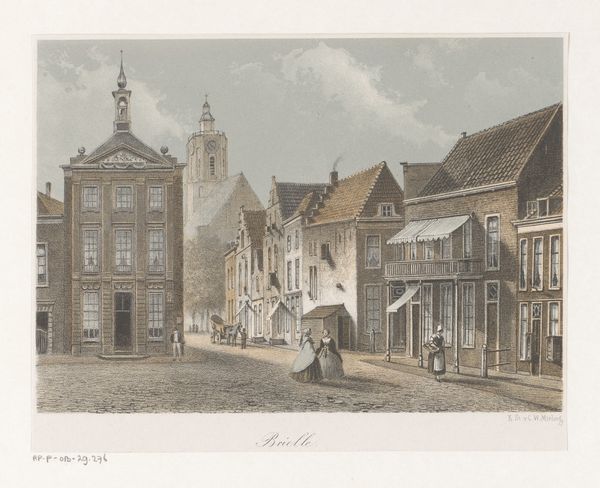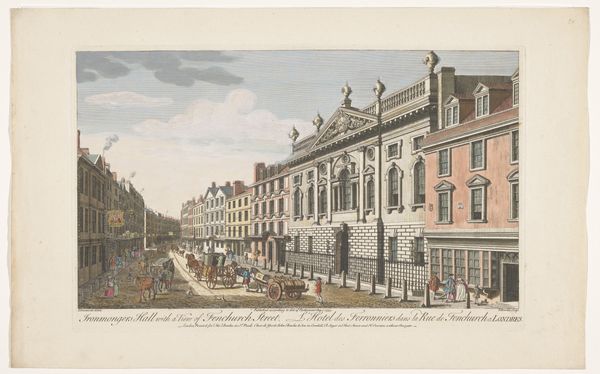
print, engraving
#
dutch-golden-age
# print
#
old engraving style
#
archive photography
#
historical photography
#
19th century
#
cityscape
#
history-painting
#
engraving
#
realism
Dimensions: height 285 mm, width 350 mm
Copyright: Rijks Museum: Open Domain
Curator: Looking at this, I immediately sense a sort of… placid anxiety. The washed-out tones contribute to a feeling of unease despite the rather composed street view. Editor: You’re reacting, of course, to "High Water in Culemborg, 1809," an engraving by Jan Gerritsz. Visser now residing at the Rijksmuseum. What stands out for me is how the technique of engraving lends itself perfectly to capturing this historical moment of crisis, offering a sense of clarity even amidst chaos. Consider the etcher’s laborious work with the metal plate. Curator: Yes, and observe how the very lines, the marks of the engraver's hand, mimic the movement of water, almost breathing life into the flood. The subject matter speaks volumes: displacement, struggle, resilience… Who owns the means of production during the printing of an event such as this and how will this document be circulated? This informs what perspectives of a disaster can be visualized. Editor: The stark contrasts enhance the dimensionality, no? Observe the recession into space created by linear perspective. The symmetry is also disrupted just enough, forcing a sense of depth which contributes greatly to the narrative, directing our sight from the building at the right to the tower at the end of the flooded street. Curator: Absolutely. But what is less apparent perhaps, is how the production of such an image would have implicated social dynamics, specifically how the rising bourgeoisie is reflected within print production. Where was Visser situated in these tumultuous events of history as a purveyor of popular sentiment through the channels available to him? How are images being mass distributed among those being represented? It offers an implicit dialogue about the power of representation. Editor: Your material focus is interesting. The composition itself, in how it distributes the elements—boats, figures, buildings—works through tension and release to create, for me, a highly structured experience. The artist provides a powerful semiotic statement that could not be articulated via other styles that focus less on realism. Curator: True, it's fascinating how realism in its representation is influenced by the social currents of the time of its production. Considering the resources it took to even produce such an item and its limited visibility is also worthwhile. Editor: Indeed. An artwork such as this presents a complex, multifaceted engagement across many lenses. Curator: Agreed. It truly offers a glimpse into not just a moment in history, but the complex network of production and meaning-making in which it existed.
Comments
No comments
Be the first to comment and join the conversation on the ultimate creative platform.
